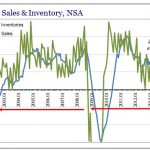As global trade disputes between the two largest economies continue to escalate, volatility has once again become a fact of global markets, as seen in the VIX spiking above 251. Perhaps due to their sensitivity to trade (and concentration in China), emerging market (EM) equities have sold off considerably during this period, falling by 10.7%2 over the last month alone. Despite the turmoil, we believe this bout of volatility can create long-term opportunities. At WisdomTree, a key element of our Index methodology is our focus on yearly rebalancing based on fundamentals. To illustrate this process, we focus on small-cap dividend payers in EM.
Longer Trend Intact—Rebalancing to Stronger Fundamentals with Less Volatility
With EM selling off, we believe this may be an opportunity for EM investors to take a step back and reassess their portfolios. Coincidently, the timing of WisdomTree’s dividend rebalances is allowing us to do the same, giving us the opportunity to review and refresh the Index weights and potentially take advantage of favorable entry points. Every year, per Index rules, WisdomTree can turn over the portfolio to reallocate Funds to potentially cheaper and undervalued constituents. This year, the WisdomTree Emerging Markets SmallCap Dividend Index rebalance increased the Index’s overall dividend yield and improved the quality of its overall basket. After rebalancing, the WisdomTree Emerging Markets SmallCap Dividend Index now offers a dividend yield of 5.2% and has meaningfully enhanced quality metrics for return on equity and return on assets.
Rebalancing to Higher Quality and Dividend Constituents

Historically, weighting EM small caps by their cash dividends and annually rebalancing back to that measure has resulted in higher returns and lower volatility. To some, it might be surprising that EM small caps have exhibited lower volatility than their large-cap counterparts, but over the last trailing five-year, ten-year and common inception periods, that has been the case. Highlighting the standardized ten-year period in figure 2, you can see the return advantage has been over 300 basis points (bps) a year in performance. For investors with a longer-term view, recent underperformance in the market can represent a buying opportunity.

















Leave A Comment